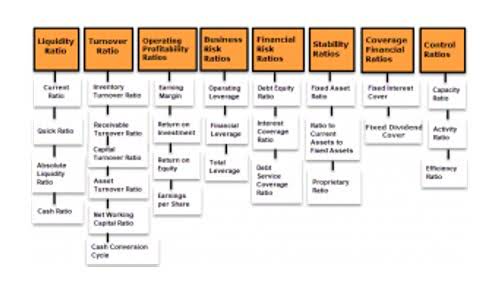
While state tax rates range from 4% to 10.9% depending on income, the city’s rates are lower but add an additional layer of taxation for residents. Together, these taxes make NYC one of the highest-taxed jurisdictions in the country. Residents and specific non-residents earning income in the state are subject to such rates. The mentioned rates change from 4% to 10.9% in accordance with the taxable income. The federal corporate income tax, by contrast, has a marginal bracketed corporate income tax.There are a total of twenty three states with higher marginal corporate income tax rates then New York. The Income tax rates and personal allowances in New York are updated annually with new tax tables published for Resident and Non-resident taxpayers.
New York Local Sales Taxes

Therefore, your paycheck will have federal FICA and state insurance taxes deductions. If you would like to get a more accurate property tax estimation, choose the county your property is located in from the list on the left. Property tax averages from this county will then be used to determine your estimated property tax. These deductions and credits are designed to provide financial relief and incentivize behaviors that benefit the state’s economy and society.
Married filing jointly and qualifying surviving spouse
FICA taxes are Social Security and Medicare taxes, and they are withheld at rates of 6.2% and 1.45% of your salary, respectively. Your employer will match the amount you pay in FICA taxes, so the total contributions are doubled. It’s worth noting that if you are self-employed, you will have to pay the entire amount yourself, though the good news is that you can deduct the employer portion.
New York income tax
- If your taxable income doesn’t fall within these ranges, you’ll need to refer to the NYS tax table or computation worksheet.
- Signing up for updates from the New York State Department of Taxation and Finance is a good way to keep track of these changes.
- This form not only provides a financial benefit but also encourages investment in projects that have a lasting positive impact on society.
- These plans are designed to encourage long-term savings by providing tax advantages.
- New York may also require nonprofits to file additional paperwork with the New York Department of Revenue to gain exemption from New York’s corporate taxes.
- If you’re a part-year resident, you are taxed on income received while a resident plus income from New York sources while a nonresident.
New York taxpayers may also subtract from New York adjusted gross income a $1,000 exemption for each dependent, not including the taxpayer and spouse. After computing taxable income, taxpayers apply a marginal tax rate schedule to compute their tax before credit amount. Eligible refundable and/or nonrefundable credits are then subtracted to determine final New York liability. The chart below shows the computation from federal adjusted gross income to final New York liability. Like the state’s tax system, NYC’s local tax rates are progressive and based on income level and filing status.

New York Tax Tables 2023 – Tax Rates and Thresholds in New York
For 2024, estates exceeding $6.94 million are subject to New York’s estate tax. Bankrate has partnerships with issuers including, but not limited to, American Express, Bank of America, Capital One, Chase, Citi and Discover. As the US Certified Public Accountant House hashes out its “One, Big, Beautiful Bill,” statehouse lawmakers are watching closely, given the impact of both its tax and spending provisions on state budgets.
Need help with your taxes?

New York has a graduated state individual income tax, with rates ranging from 4.00 percent to 10.90 percent. New York has a graduated corporate income tax, with rates ranging from 6.5 percent to 7.25 percent. New York also has a 4.00 percent state sales tax rate and an average combined state and local sales tax rate of 8.53 percent. New York has a 1.54 percent effective property tax rate on owner-occupied housing value.

- There are four tax brackets starting at 3.078% on taxable income up to $12,000 for single filers and married people filing separately.
- New York State imposes an income tax on its residents and part-year residents, as well as non-residents who earn income from New York sources.
- New York offers a standard deduction to reduce your taxable income, with different amounts based on your filing status.
- Alongside your federal income tax burden, you must account for state income tax if you choose to live in New York.
- The tax breaks are expected to affect over 4.4 million taxpayers, who will save $690 million in taxes this filing year.
- Taxpayers reported over $200 billion in net capital gains in 2021, nearly doubling the annual average amount from all other years since 2017.
While they don’t reduce your taxable income, they can still help you budget and save. New York’s median income is $74,777 per year, so the median yearly property tax Financial Forecasting For Startups paid by New York residents amounts to approximately % of their yearly income. New York is ranked 6th of the 50 states for property taxes as a percentage of median income. New York taxpayers should keep detailed records of their income, deductions, and credits to ensure accurate and compliant tax filing. The New York State Department of Taxation and Finance conducts audits and reviews to ensure compliance with state tax laws. Homes in the city are more expensive, with a $700,000 median price as of 2023.
IRS Issues Guidance on the Taxation of State Tax Payments Issued in 2022
Income tax rates in New York State vary from 4% to 10.9%, contingent on factors like taxable income, adjusted gross income, and filing status. Typically, if you’re a resident of New York State and you need to file a federal return, you must also file a New York State income tax return. Active-duty pay is taxed like normal income new york income tax if you are a resident of the state. The Earned Income Tax Credit (EITC) is a significant tax credit in the United States, designed primarily to benefit working individuals and families with low to moderate income. As a refundable credit, the EITC not only reduces the amount of tax owed but can also result in a refund if the credit exceeds the taxpayer’s total tax liability. This makes the EITC a powerful tool for reducing poverty, incentivizing work, and providing financial support to those who need it most.


